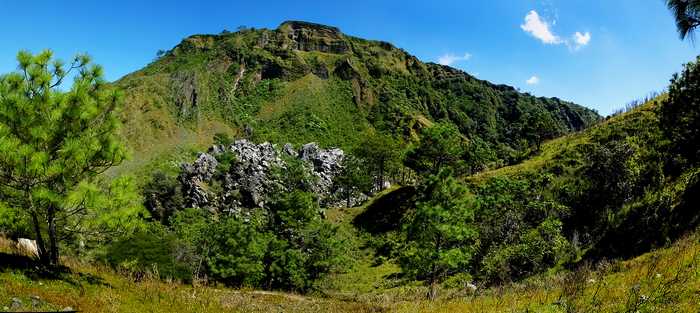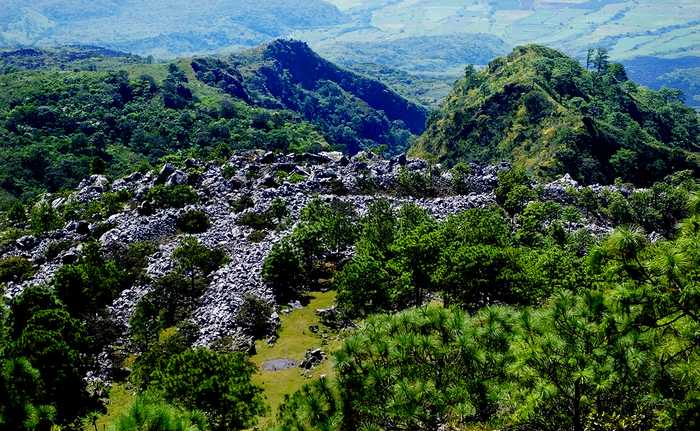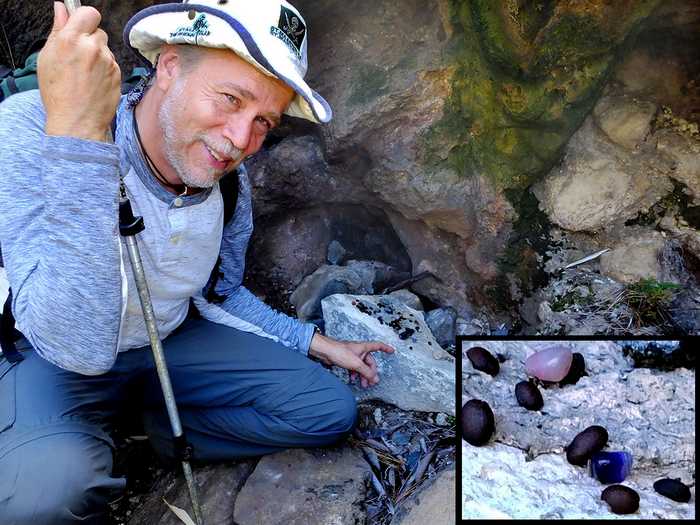|
|
|
CEBORUCO VOLCANO
Hissing Fumaroles, Spectacular Crater, Glorious View |
By John Pint Ceboruco Volcano looms 2260 meters high above the little town of Jala, Nayarit, located 120 kilometers northwest of Guadalajara. If I had a guest with time to visit only one of western Mexico’s volcanoes, I would take that person straight to Ceboruco, which is not only scenic and exciting, but boasts an access road that has been continuously well-maintained for decades. My friend Rodrigo Orozco had been dying to go there for a long time, but I recommended waiting until the rainy season ended so we could spend the night, allowing us plenty of time to hike to the volcano’s dramatic crater. I described Ceboruco in Chapter 29 of Outdoors in Western Mexico, but I hadn’t been back there in at least ten years, plenty of time for things to have changed significantly. Would I find it as fascinating as ever? We left Guadalajara at 8:00 AM on a Saturday and 90 minutes later found ourselves at the foot of the massive volcano on a road newly paved with two thin lines of bricks. Lush vegetation sprinkled with wildflowers formed a sort of tunnel overhead and around the first bend we spotted two beautiful West Mexican Chachalacas which seemed to be saying, “Bienvenidos a Nayarit!” Long switchbacks slowly took us to higher elevations and colder climates, until we found ourselves in a pine forest. Fourteen kilometers from Jala we came to a little side road leading down to a very long, flat meadow with fumaroles steaming out of a wall above it. A short distance further up the road, we came to the parking area, which is surrounded by several abandoned buildings. We parked and headed southwest along the trail to the crater. Beside pine trees, we also found capulines (Mexican Cherry Trees), clethras and what appeared to us to be cork trees. Most of these were covered with lichens and dripping with Spanish Moss. In the branches we spotted flowering orchids again and again. Every few step along this trail, we would come to quaint, grassy meadows bordered by steeply rising walls of black jagged lava, quite a sight to see. “Let’s camp here tonight!” exclaimed Rodrigo again and again. “Claro que sí,” we would reply, “as long as you volunteer to carry all our gear over here from the cars.” When Rodrigo wasn’t gushing over a new meadow, he was discovering all sorts of interesting creatures that none of the rest of us had spotted. “This elegant flier with transparent wings is actually the adult version of the Ant Lions you’ll find here later in the year, hiding at the bottom of funnel-shaped ant traps in the loose sand.” Rodrigo also showed us a most curious kind of caterpillar, the larva of the Bagworm Moth, which creeps along dragging its home with it, well decorated on the outside with miniature twigs. This beautiful and interesting trail eventually meandered its way to the rim of the crater. Down below lay a great, towering jumble of volcanic rocks from which puffs of steam occasionally wafted. From here made our way around the rim to a sharp peak offering a magnificent view of Ceboruco’s last lava flow, cut in two by the toll road to Tepic.  Finally, we returned to our cars and decided to camp not in one of Rodrigo’s bucolic mini-meadows, but at the foot of the big fumaroles in the big, kilometer-long meadow further down the mountain, where we could pitch our tents right next to our cars.  Here we set up camp and I wondered what sort of weather and temperatures we might experience that night. I couldn’t help recalling the conditions I had encountered on top of Ceboruco years ago: “Over the dark, jagged wall above, all kinds of weather can come at you with incredible swiftness. One evening my nephew and I were first soaked with heavy rain, then battered by resounding hailstones. Suddenly, the sky cleared and the stars came out! We went for a walk, and, off in the far distance watched heavy black clouds roll over the valleys below. Lightning bolts began shooting up from the ground and down from the clouds simultaneously, in the most spectacular fireworks display we had ever seen. Moments later, thick fog rolled in, swirling through our campsite until visibility was limited to about one meter.” This night, however, there were no pyrotechnics. We fell asleep to the chirping of cicadas (totally unexpected in the Fall) and the incredibly beautiful flute-like song of the clarín jilguero or brown-back solitaire. Halfway through the night, when the temperature was only 7 degrees Centigrade, I was awakened by footsteps right outside my tent. It didn’t sound like a cow or a bull, so I decided, it must have been one of my companions on his way either to relieve himself or to warm up next to the fumaroles a few meters above my tent. But the next morning all my friends swore they hadn’t gone anywhere in the night. After breakfast, Rodrigo Orozco announced, “John I think I found your mystery visitor.” He pointed to a very narrow animal path, only 15 centimeters wide, leading off into the brush. We followed it quite a long distance and came to some huge animal droppings. I suspect we may have discovered the haunt of one of Ceboruco’s famed pumas. If you decide to camp beneath those fumaroles, keep your camera handy in the middle of the night! How to get there The map in my book is still accurate. In addition, you can check “Ceboruco Crater Trail” on Wikiloc.com, which shows you the entire route from the toll road to the crater rim. Driving time from Guadalajara to the top of the volcano is just over two hours.  Camping at foot of the fumaroles on Ceboruco Volcano.  Lava flow atop Ceboruco Volcano, Mexico.  Offerings of coffee beans and smooth stones, found at fumarole opening in Ceboruco Crater.  Dew view, on an early morning walk. |
